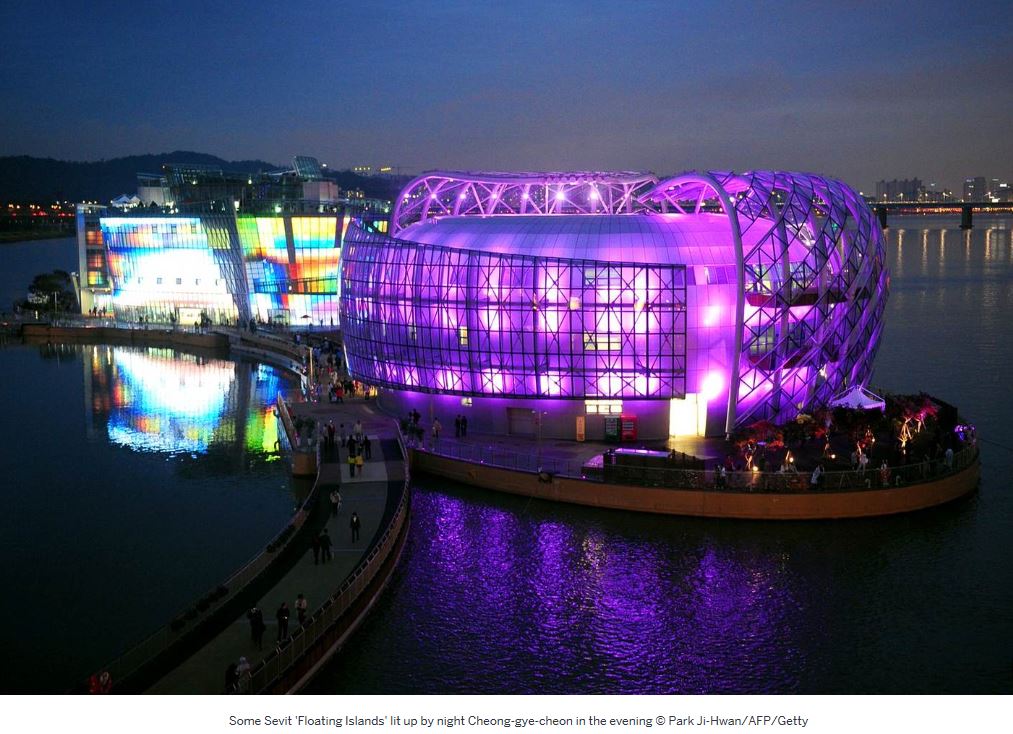[Lonely Planet] Seoul’s dynamic cityscape: an architectural tour through the South Korean capital
Seoul’s dynamic cityscape: an architectural tour through the South Korean capital
Simon Richmond,Lonely Planet Writer
Read More Click Here
In the spirit of New York's High Line elevated garden promenade, Seoul will launch its Skygarden in 2017. It is the latest in a series of bold architectural and urban planning projects that have marked out this vibrant metropolis of 10 million people as the place to watch when it comes to a crafting a design-conscious, people-centric city for the 21st century.
Sixty five years ago, when Seoul lay in rubble following the Korean War, such a transformation was beyond most people's wildest dreams. The priority then was to rebuild - fast. The results were far from pretty, but served their purpose. Seoul was the boiler room of South Korea's economic miracle, a non-stop city, crisscrossed by subways and elevated highways, its workers housed mainly in utilitarian, unlovely apartment blocks. Hosting the summer Olympics of 1988 and the FIFA World Cup of 2002 provided the impetus for some more imaginative city planning but mainly resulted in Seoul gaining new sports stadia and a couple of much needed parks.
Waterside parks
The pivotal moment came in 2003 when Lee Myung-bak, then mayor of Seoul and later to become the country's president, green-lighted a multi-million won plan to demolish a 5.6km stretch of elevated highway not far south of the imperial palace Gyeongbokgung.

Beneath the concrete at the highway's base ran the course of the Cheong-gye-cheon a creek buried in the late 1960s when rampant development and pollution had made it an eyesore. Two years later, the highway was gone, replaced by a pristine stream flowing beside sinuous promenades and under reconstructed historic stone bridges. Striking pieces of public artwork, including the giant pink and blue swirl Spring by Claes Oldenburg and Coosje van Bruggen, were also part of the design. The public loved it and the project was hailed a success for returning a strip of nature to the city centre, as well as naturally cooling the area and dramatically decreasing vehicle traffic.
In 2010, under the theme of 'Design for All', Seoul took on the mantle of World Design Capital. The same year it was appointed a Unesco City of Design. Across the city, hundreds of imaginative projects were softening Seoul's concrete and steel edges.
The highways that thundered along both sides of the Han River couldn't be so easily swept away, but the parks beneath them were upgraded. An old water filtration plant on Seonyudo, was transformed, Cinderella-like, into an award-winning garden oasis. The futuristic-looking recreation complex Some Sevit crowned artificial islands floating beside the Banpo Bridge, itself transformed at night by a fountain illuminated in rainbow colours arching forth from its girders into the river.
Ambitious design projects
Two key projects initiated in that period were so ambitious that it would take several more years for them to be completed. Finished in 2014, the inimitable design signature of the late Dame Zaha Hadid is immediately apparent at Dongdaemun Design Plaza & Park. Billed as the world's largest atypical building, and looking more like a giant spaceship than a convention, exhibition and shopping centre, the curvaceous structure is coated with 45,000 aluminium panels, and glows from pulsating LED lights.
Around it Hadid crafted a remarkable, undulating landscape that incorporates fragments of the area's history, including remains of Seoul's 15th-century city walls and the 1925 sports stadium that once occupied the spot. It's one of Seoul's most fascinating structures.
Also making a bold architectural statement is the new Seoul City Hall opened in 2013. The design is based on the eaves of a traditional Korean house, which provide shade. But if you didn't know that, you might think the glass structure more resembles a giant wave, frozen as it is about to crash down on the former 1926-vintage City Hall (now a library).
Inside, the eco-friendly building's lobby boasts a vertical garden that rises up seven floors and is hung with over 70,000 plants in 14 different species. Over the lobby also dangles Jeon Su-cheon's Meta Epic: SeoBeol – a giant cluster of hundreds of translucent spheres symbolising Seoul's dynamism.
Soaring towers and skygardens
From all across the city, it's hard to miss the tapering fins of Lotte World Tower, the sixth-tallest building in the world, cutting 555m high into the sky. The 122nd floor of this sleek tower, designed by Kohn Pedersen Fox Associates, will be the best place to take in Seoul's full architectural sweep when the upper floors are completed, likely by the end of 2016. You can already visit the mammoth shopping mall, a 2000-seat concert hall, multiplex cinema and aquarium featuring South Korea's longest freshwater tunnel and first underwater escalator tunnel.
By April 2017, a nearly 1km-long stretch of disused highway next to Seoul Station will have been transformed into a 17m-high platform on which trees, shrubs and flowers will be planted to create an arboretum of local species. The Skygarden will also include cafes, florists, street markets, a library and greenhouses. Set to become one of the most photogenic spots in an already highly Instragram-friendly city, the park will have free wi-fi - as will all public spaces in the city (including buses and subways) under Mayor Park Won-Soon's Seoul Digital Plan.




